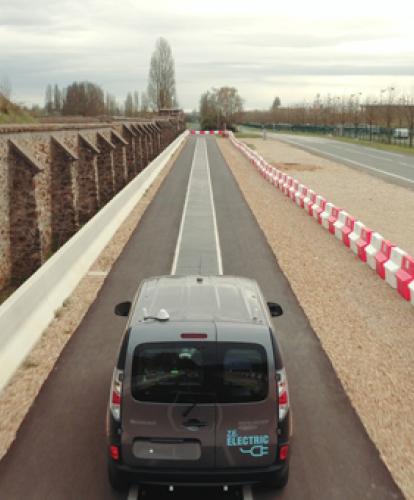Renault has developed a new prototype vehicle that is able to charge wirelessly on the move. The dynamic wireless electric vehicle charging (DEVC) system would remove the need for EV drivers to have to stop and plug-in to recharge the batteries.
Using a Kangoo Z.E. as the base vehicle, Renault has demonstrated the system’s capabilities by building a 100-metre long test track in collaboration with development partners Qualcomm and Vedecom.
The charging system is able to wirelessly charge a vehicle on the move with up to 20 kW of power, with car travelling at speeds of more than 62mph.
Two Kangoo Z.E.s have been modified to cope with the wireless DEVC systems and were run along the test track to prove its capabilities. The tests are part of a larger 9 million euro FABRIC project, which is partly funded by the European Union to look into the viability – technically, economically, and socio-environmentally – of wireless DEVC as an EV range extender. The project began at the start of 2014 and will run until the end of the year.
Eric Feunteun, Electric Vehicle Program Director, Groupe Renault, said: “Contributing to this exciting project has enabled us to test and further research dynamic charging on our Kangoo Z.E. vehicles.
“Our research engineers have worked very closely with the Qualcomm Technologies and Vedecom teams to complete the DEVC system integration demonstration as part of FABRIC. We see dynamic charging as a great vision to further enhance the ease of use of EVs, and the accessibility of EVs for all.”
Steve Pazol, vice president and general manager of Wireless Charging, Qualcomm, said: “We are inventors. We are wireless electric vehicle charging. This dynamic charging demonstration is the embodiment of this.
“I am immensely proud of what we have achieved. The combination of a global team of expert engineers and Qualcomm Halo technology, which covers all aspects of WEVC systems, irrespective of the magnetics used, has enabled us to really push the boundaries of the possible and outline our vision for future urban mobility.”



